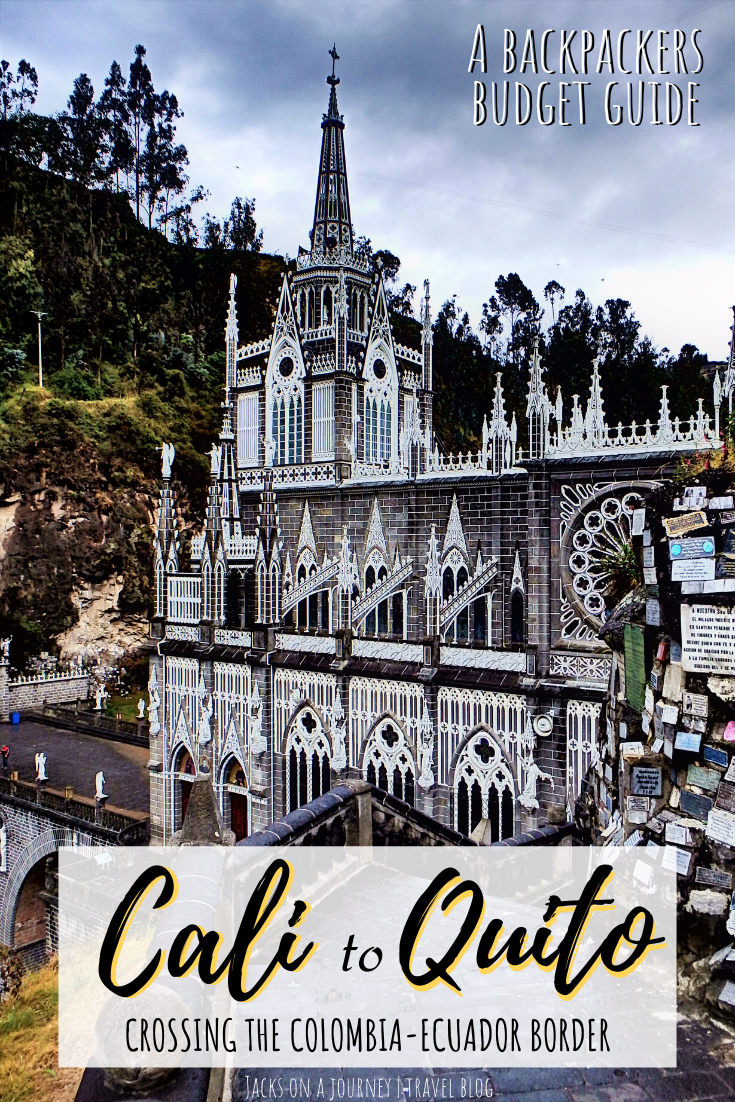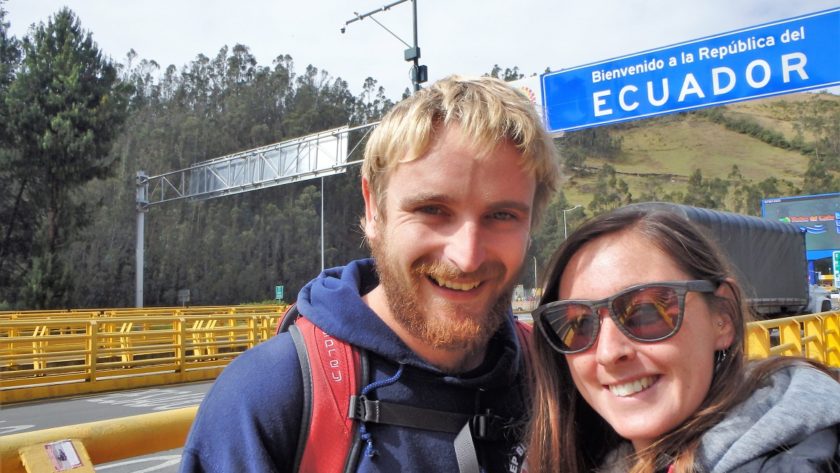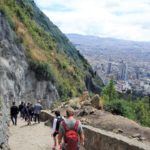The journey from Colombia to Ecuador was our first border crossing while backpacking through South America.
After quite a bit of research both online and with fellow travellers, it seemed the easiest – and therefore most common – route between the countries was from Cali to Quito.
I won’t lie, we were a little apprehensive at first about travelling through Colombia’s south-east region. It is a little more notorious than it’s more-travelled north.
But when you’re on a budget, you make it work! And I was definitely more than happy for us to make a stop to Colombia’s salsa-capital, Cali.
Cali
Having a dance lesson in the self-proclaimed ‘birth-place of salsa’ was high on my to-do list in Colombia. In that regard, Cali certainly did not disappoint.
And, by complete luck, an added bonus we discovered on arrival, was that Cali was hosting its annual World Salsa Festival. The best part? It was free to attend!!
The Sunday we arrived was the final day of the week-long competition. Meaning we got to watch the best of the best perform live at the local stadium. There was a couple and group division, all of who were just phenomenal.
I don’t know whether to call them dancers or acrobats. What I do know is this was a great introduction to the city and a sure-fired way to get us (me) excited about salsa.
Note: Cali seems to require a bit more caution than Colombia’s other large cities. We were advised by local staff at our hostel not to take cameras or wallets to the stadium, just the cash we needed. It may have been a bit over the top but you don’t ignore a local’s advice in a new city.
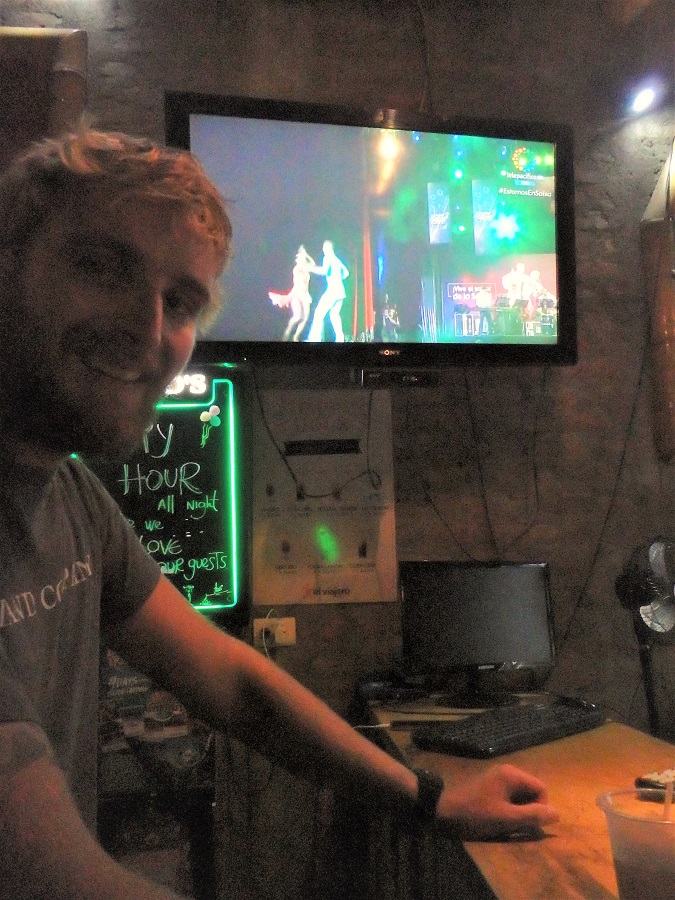
Salsa class
Sufficiently pumped and on the salsa band-wagon, I convinced Rhys to sign-up with me for a free salsa lesson at our hostel the next day. He did take quite a bit of convincing, and a bit of Dutch courage. Although we both did to be fair. Cue the happy hour cocktails!
Being free, it was no surprise our dance class was packed. This only added to the humour as there was a lot of bumping into each other as most of us tried and failed to copy the teachers. I don’t think the cocktails helped. We may have surpassed courage and gone straight to tipsy.

I’d say we were more ‘two left feet’ than dancing queens by the end! Nonetheless we were all encouraged to practice our new moves and continue to dance the night away. Our hostel regularly helped organise round trip taxis to local salsa clubs – a great way to experience Cali’s nightlife.
Note: We were told to always order a taxi and wait inside until it arrived. And of course, stay as a group. Definitely do not wander streets here alone at night.
If you will be staying in Cali for a while and are serious about learning salsa, then consider visiting a dance school for at least a few lessons to learn the basics. Salsa Pura is a well-rated studio located in the heart of San Antonio, where many hostels are located, or check out the famous but pricier Swing Latino.
Exploring
Aside from experiencing the utter joy of salsa, I have to be honest, we didn’t see a huge amount more. One of the top rated sites in Cali is el Gato del Rio, the Cat of the River.
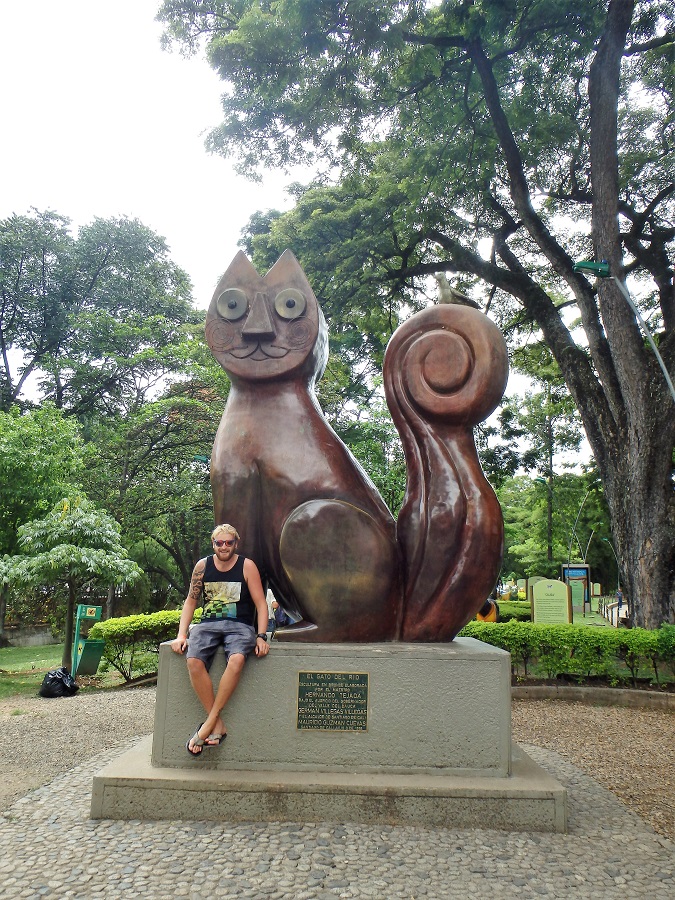
Along a path from the main monument, the park also displays a number of other unique cat sculptures created by local artists. The placards describing each were all in Spanish, leaving us more than a little confused as to what the artist was portraying in most cases.
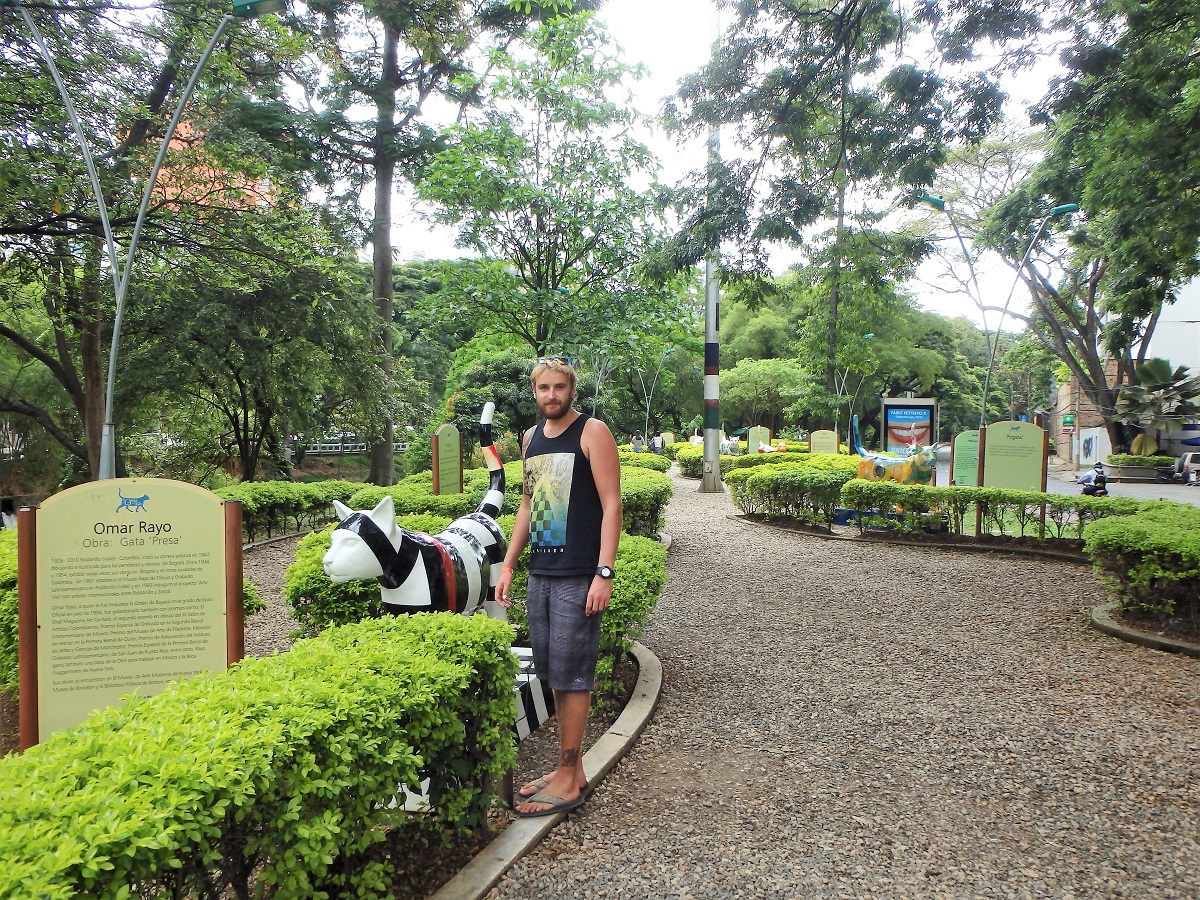
If cat sculptures aren’t your thing (I mean, why wouldn’t they be?!), then some other notable attractions in Cali include the gothic-style church Iglesia la Ermita, the city’s own El Cristo Rey statue and el Cerro de la Cruces.
In all honesty, we were a little nervous about venturing to far from our home base. This was based on what we had read, what we had been told, and the general vibe we felt walking around. Cali just didn’t quite captivate us in the same way the rest of Colombia did.
Note: Later into our trip we did meet several backpackers who had spent weeks and even months in Cali and absolutely loved it! It seems this city may be one of those places that just needs to be given a chance. We were only there for 2 days after all.
Where to stay in Cali
We spent 2 nights at the Colombian/Uruguayan hostel chain El Viajero. This hostel had a lot of positives for us but also a few negatives which I only think fair to mention.
The free salsa class was a major plus. And they even offered free yoga classes throughout the week – I was psyched to have my first yoga class in Spanish! The pool was also a great addition, as was their daily happy hour at the bar.
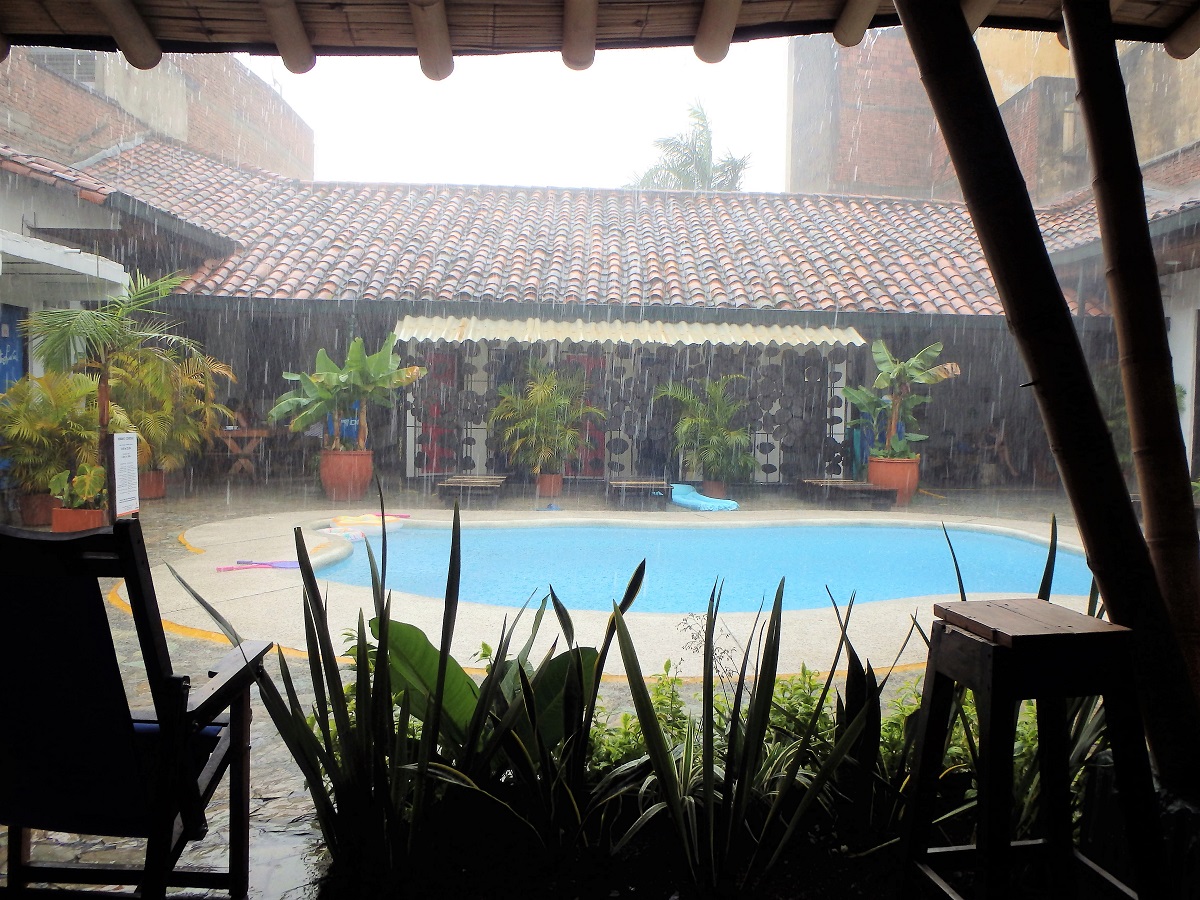
The not-so-great aspects were the rooms which were cramped and smelled pretty bad. In fairness, this was mostly due to a guy who decided to use our 10-bed dorm as a gym (fellow travellers, please don’t do this).
Additionally, a couple of the staff were a little frustrating. One in particular caused an upset by quite rudely closing the bar early the first night. They also turned all of the lights off leaving us nothing to do but to go to bed at 10:30pm.We also heard of staff letting their friends in the hostel to try and pick up women. It clarified why we then had a guy in our room who had been sleeping without bedding for 2 nights. It was a bit strange.
Despite these frustrations, the positives did outweigh the negatives. And we would probably still recommend the hostel chain as a safe bet to ensure a good stay.
Some additional hostels to consider in the same area would be Hostal Pajara Pinta or Hostal Ruta Sur which also have great reviews.
From Cali to Ipiales
We did a fair amount of research on this portion of the journey. Particularly because it was our first border crossing but also because the more we read the more anxious we became.
We discovered several stories from unsuspecting travellers who’d experienced late-night bus robberies with the advice not to do the journey at night. Definitely not what any wants from a fun backpacking adventure!
So, being cautious, we initially ruled out the option of a night bus. However, when we were actually in Cali, almost every backpacker who had come from the south had got a night bus. Without any issues. Maybe the research we had read was outdated?
Our nerves calmed, we decided to just do it. It is a long way to Quito after all. I am very happy to report that we too had no issues on route.
We booked a 12 hour, over-night bus journey from Cali to Ipiales online via BusBud. It cost us around 76,000 COP ($24 USD) each.
We would likely have got a ticket cheaper directly at the station. If you can buy there in advance (i.e. on arrival to Cali), we recommend. What we strongly don’t recommend is hanging out around Cali’s bus terminal at night.
A quick side story…
Something we can’t not mention was our taxi journey to the terminal itself. It was a bit of a nail-biter, to put it nicely. Our driver went into a rage before we even left because Rhys had slammed his door shut while getting in, thinking that’s what the driver had instructed him to do. It was scary.
A bit in shock, we amazingly didn’t get out there and then. Partly because he had been late and we would have missed our bus otherwise.
Both on edge, the trip flipped 180 as the driver began speaking to us in English and was very excited about us being Welsh. He became chatty and even waved us off with ‘good-byes’ and ‘good lucks’ as we shuffled into the station. We were both relieved and puzzled.
What to learn from this? Never slam a taxi drivers door! Unless clearly instructed, ha. And always order one 15 minutes earlier than you think you need.
Ipiales
After a (thankfully) uneventful bus journey we arrived in Ipiales ahead of schedule, at 6am. Perfect for our little planned side trip.
Now we might not typically go out of our way to visit a cathedral, but I think most would agree that it has to be done for the magical Santuario Las Lajas.
Las Lajas
Not surprisingly, this stunning building is referred to by many as ‘the most beautiful cathedral in the whole of South America’.
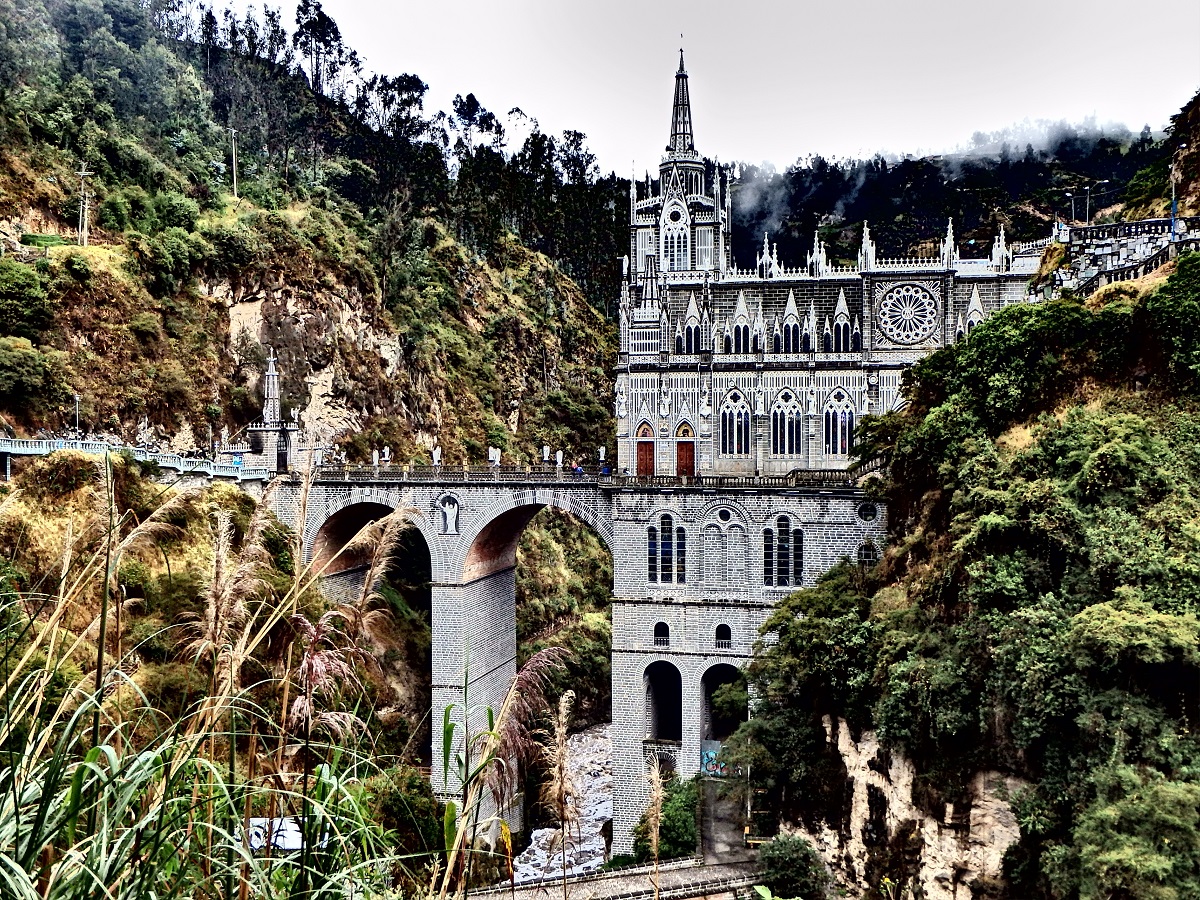
While fairly isolated, this hidden gem is luckily not too difficult to get to.
And it’s clearly a popular detour for those backpacking from Cali to Quito. Straight off our bus we found several colectivos. With just one other backpacker from our bus the driver was happy to take the three of us to Las Lajas.
Note: Typically colectivos will wait until they are full before making a journey. Not ideal if you are in a rush but a great way to save a few dollars.
It cost us just 3,000 COP ($1 USD) each to take the 10 minute drive.
In Las Lajas, we were dropped at the top of a steep hill which led down the valley towards the iconic structure. Whether from a distance or up close the cathedral is simply mesmerising.
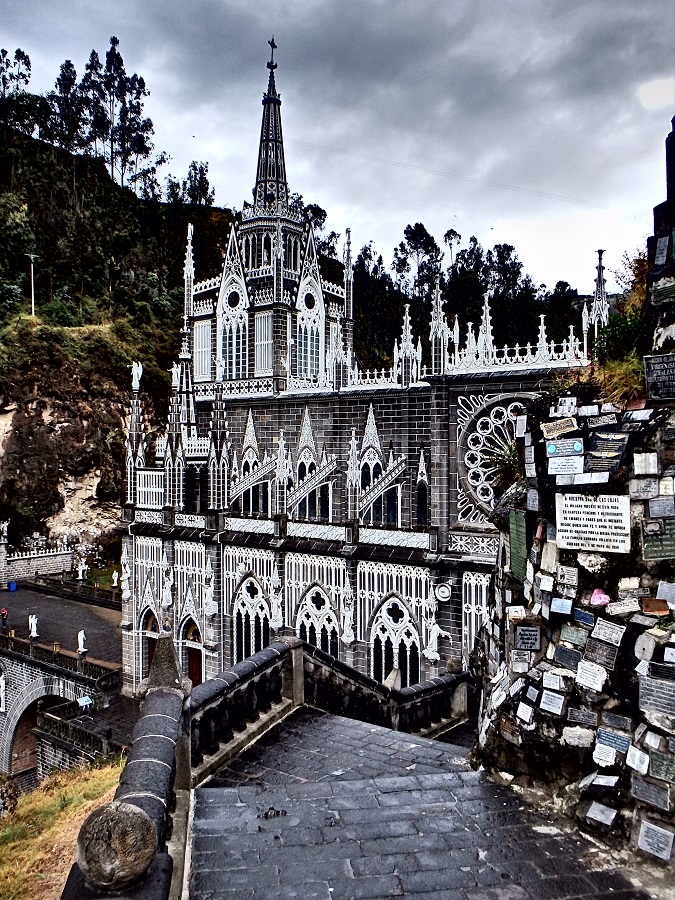
There appeared to be a small service commencing when we arrived so we just took a quick glance inside. Given the grandeur of the exterior of the building, the inside is surprisingly minimalist.
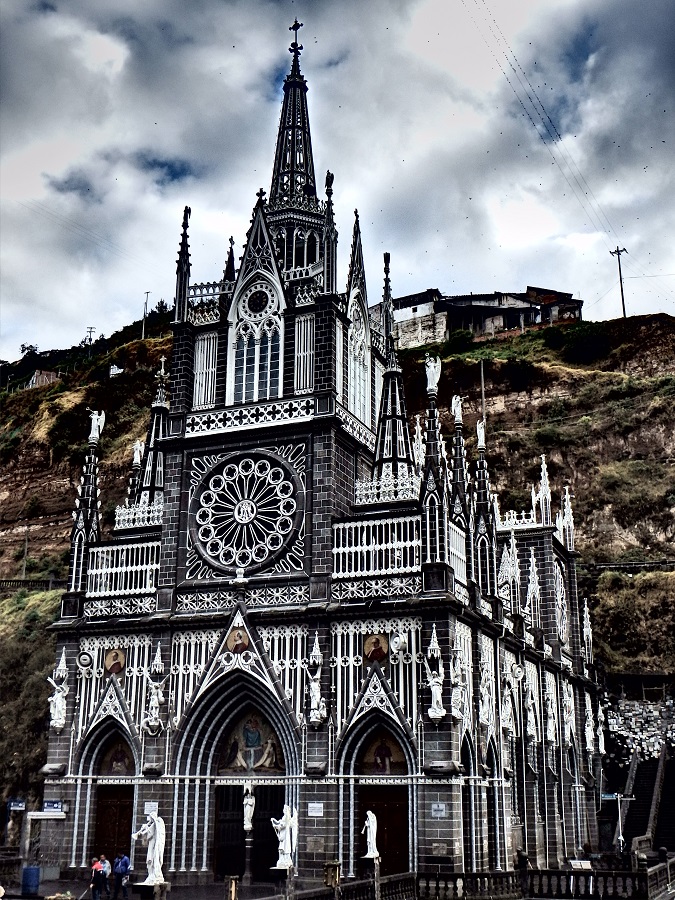
Our small detour to Las Lajas took us a little over an hour.
Back at the bus terminal we found a larger colectivo in the form of a passenger van. It luckily didn’t take long to to fill before the 10+ of us were driven to the border. The 20 minute ride cost us just 2,000 COP (>$1 USD) per person.
Tip: We unfortunately didn’t know this at the time, but you can store your backpack in lockers at the bus station in Ipiales while you visit Las Lajas. If we had have known we would have 100% done this. Carrying everything we owned up those steps and steep path was pretty challenging.
Crossing the border
Having had friends cross this Colombia-Ecuador border a few weeks earlier, we had been told to prepare for a long wait. Apparently it can get crazy busy.
Our only assumption is that this is dependent upon the time travellers cross as for us, it was a breeze!
We first queued to get our passport exit stamp on the Colombian side. Then we walked the bordering bridge across to Ecuador’s immigration office. Here we got our new entry stamp and BOOM, we were done!
It took us around 30 minutes to complete the whole process. We call that a success!
It seems that the secret to this speedy crossing is to go early. We arrived at the border by 8.00am, seemingly before the crowds had arrived.
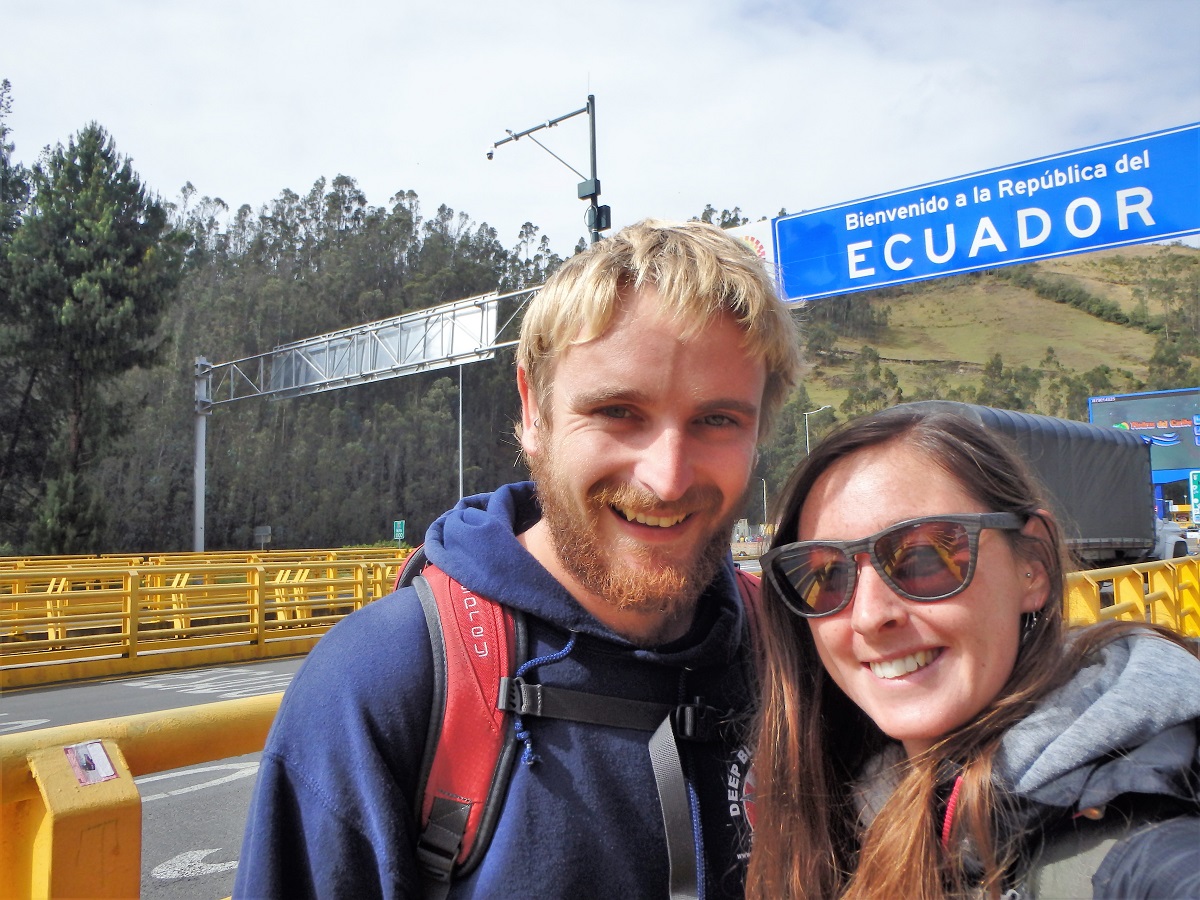
Our day was off to a great start, made even better by the friendly Ecuadorian immigration officer. Such a cheery guy! And clearly another fan of the Welsh thanks to Gareth Bale, who has totally put our country on the map (for South Americas at least).
Tip: On each side of the border you will find numerous people offering currency exchanges. We had both read and been advised that these people rig their calculators so you do not get given the accurate exchange rates. Either demand to use your own phone to calculate or, if desperate, exchange a small amount to get to Quito and a designated money exchange location. Or, as we did, bring U.S. dollars with you and use your travel card when you can.
The last leg
We were super psyched to have finally reached Ecuador. The only bit remaining was to now make it to Quito. What’s five more hours, aye?
We had read in advance that there are usually colectivos on the Ecuador side to take backpackers to the bus station in nearby Tulcán. Maybe we were too early because we saw none. So we opted for a taxi instead.
The 15 minute journey wasn’t crazy expensive, costing us 8,000COP (US$2.50). Plus the driver kindly accepted the last of our Colombian pesos as payment.
Tulcán’s bus terminal has routes to several popular destinations in Ecuador, including Otovalo, Ibarra and of course the capital, Quito.
We managed to quickly board a departing bus as soon as we arrived at the terminal. Not the best move we realised upon discovering there was no toilet on board and no scheduled rest stops. We do not recommend doing the same.
Also, be prepared, the bus does make stops… these however are not for passengers to disembark. They are instead for vendors to embark! For once, food was not on our minds.
It ended up taking us a bladder-busting 6 hours to get to Quito.
Tip: Very important, when on public buses, never leave your bag on the floor or under your seat. Always keep it on your lap.
We were unaware at this point that thefts on buses were a regular occurrence. It even happens to locals but backpacking gringos are easy targets. We met several travellers who learned this the hard way. It could have easily been us.
Arriving in Quito
Given the size of Quito, it is understandable that it has two main bus terminals: Carcelén, in the north, and Quitumbe, in the south. Therefore, before making this journey you want to know where you should be getting off. As we were staying in Quito’s historic centre we disembarked at the end of the line in Quitumbe.
While it was possible to get a local bus from the terminal for a fraction of the cost, after nearly 20 hours on the road we unanimously decided to take a taxi. It was not cheap at US$20 but the 45 minute drive, with traffic, helped us justify it.
We arrived in our hostel in Quito at 4pm that afternoon, 21 hours after we had set off from Cali the evening before. It was long and tiring but we couldn’t have asked for smoother sailing backpacking from Cali to Quito.
Like this blog? Pin it!
